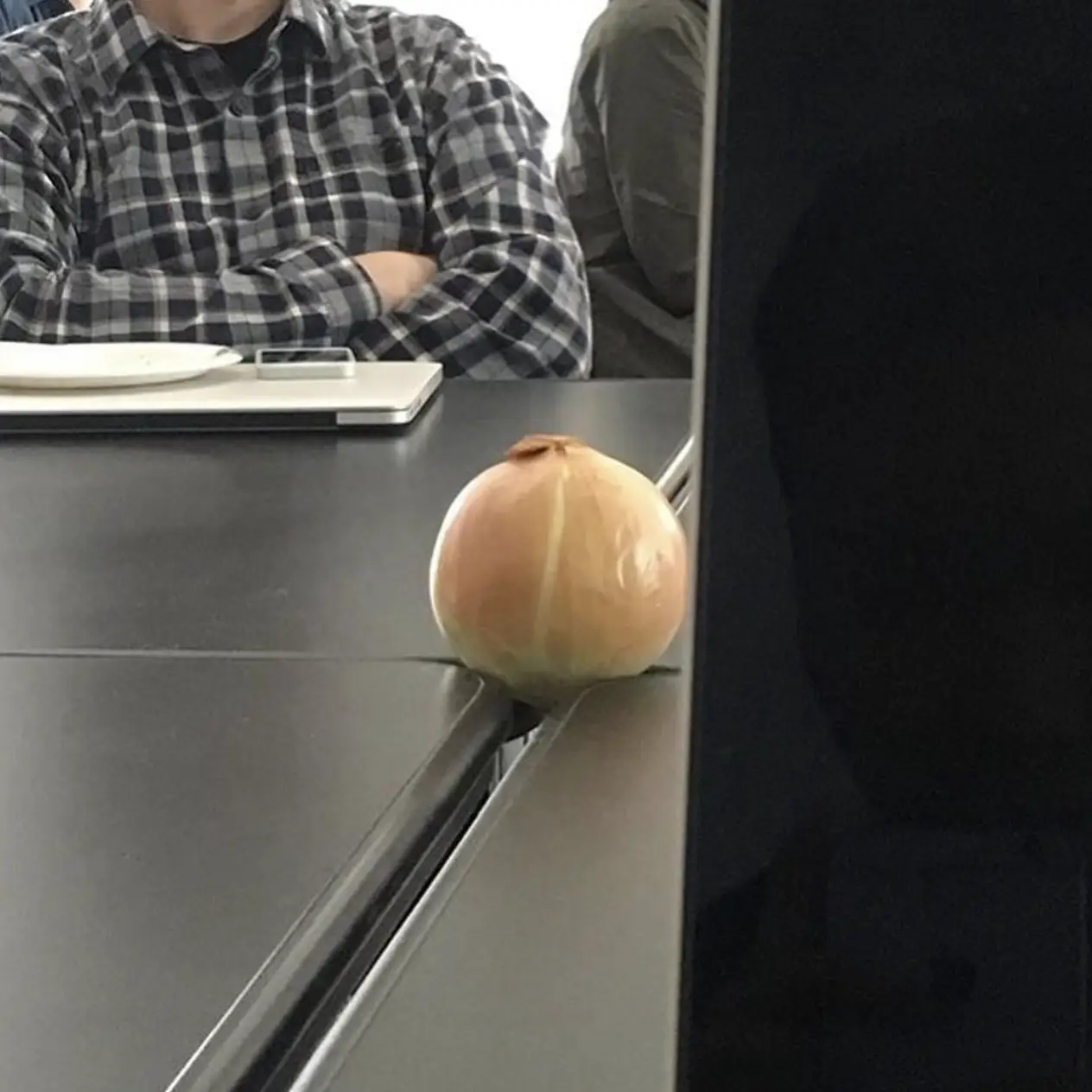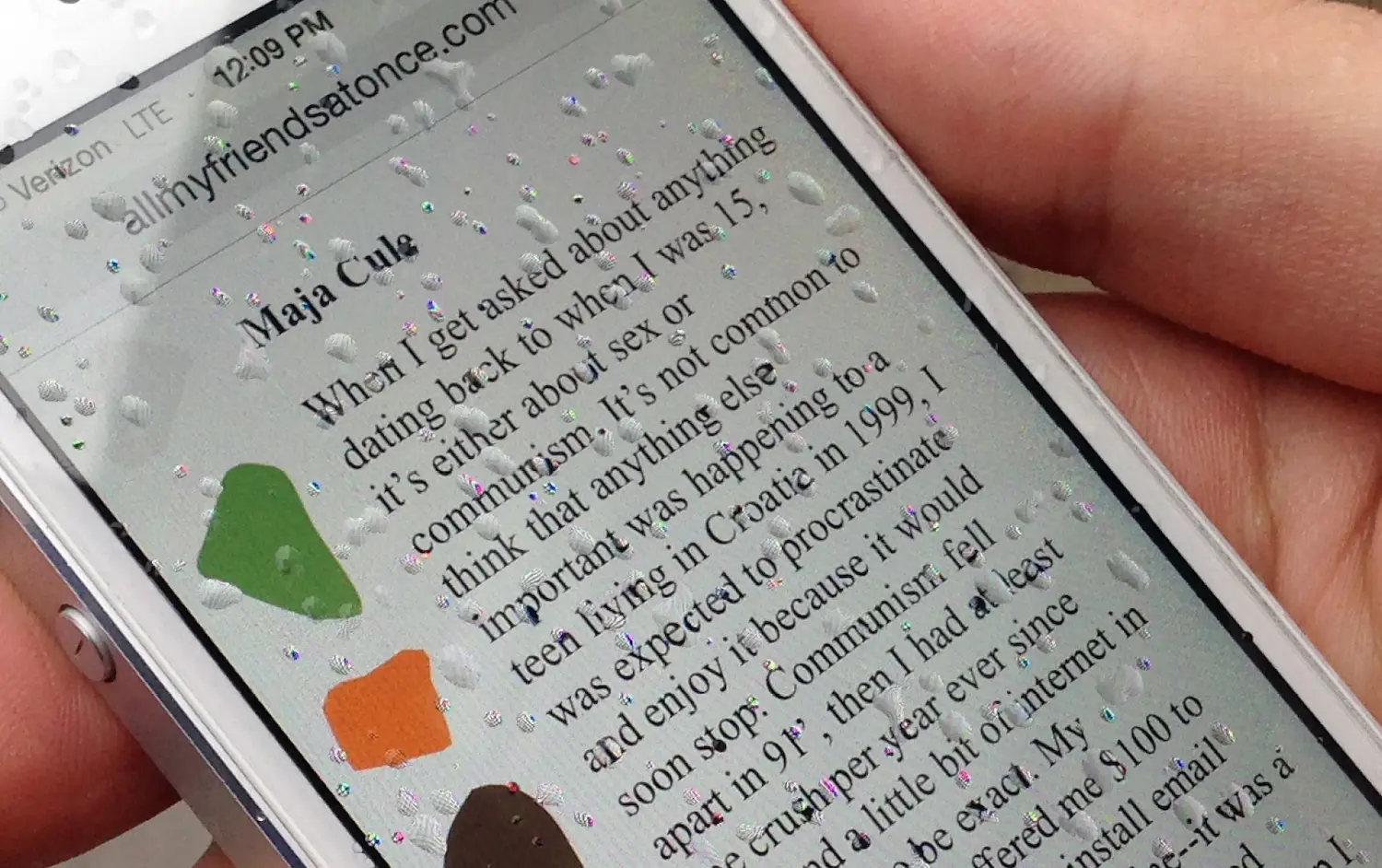I wanted to write about two online publications I orchestrated and brought to life. One is new today — July 23, 2020. The second was published seven years ago — in 2013. I’ll announce the new, re-announce the old, and tell you why I’m thinking about them together.
1. The Life and Death of an Internet Onion
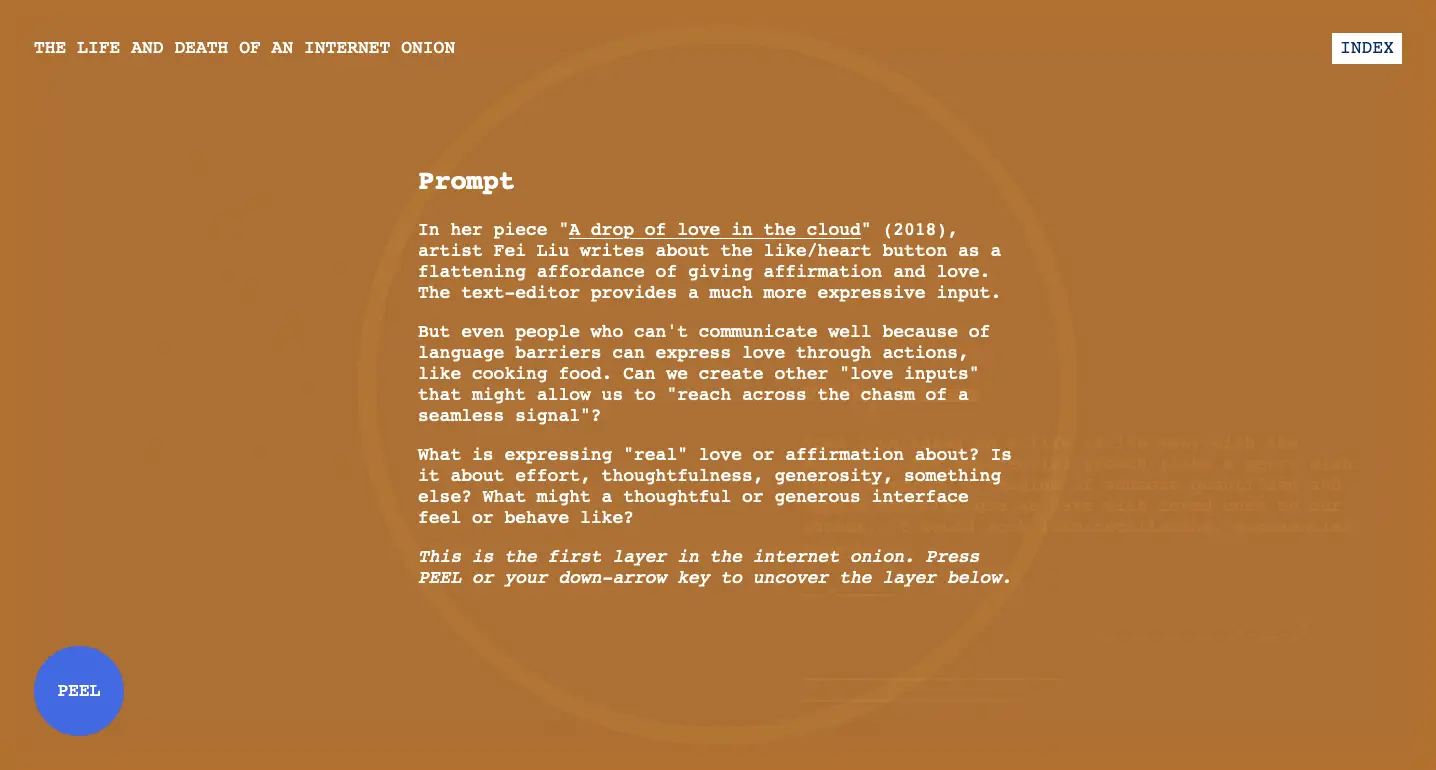
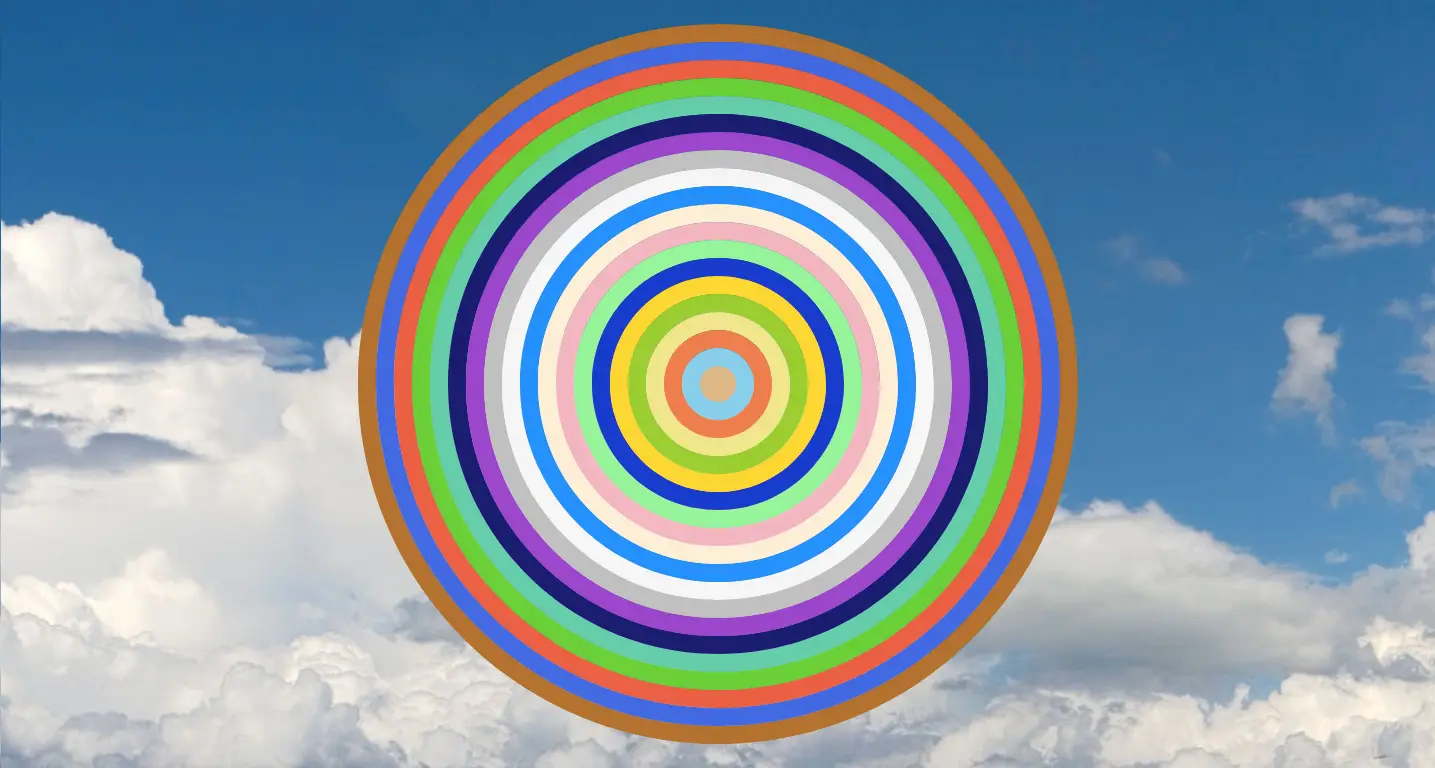
The “internet onion” is a webzine anthology that explores the possibility of love online. It started as a simple writing prompt with my interactive design class at Yale two springs ago—we started by wondering what thoughtful or generous interfaces might feel or behave like, and if there is any way to best send and receive love online, “reaching across the chasm of seamless signal” in any meaningful way.
Like love, onions absorb and magnify the time and energy you put in. Both have incredible healing properties, which we need now more than ever amid a global pandemic. Expressing love online is no longer a mere desire but a visceral need.
This project was begun as a seed two years ago, when I read artist Fei Liu’s writing, “A drop of love in the cloud.” One year ago, her words inspired a prompt for my class, and my students’ writings evolved into a web publication that we together compiled, edited, designed, illustrated, and developed. After a long time coming, I’m announcing it today with the help of Are.na.
Just so you know, this publication will eventually rot and die. It’s an onion, and the shelf life of a non-refrigerated onion is about 5 weeks. Thankfully, onions are perennial, and this one will return online around this time next year. “Who knows what will be going on then, what new things will arise to keep us apart, and what new inventive ways we’ll devise to stay together,” supposes Meg Miller in the onion’s final layer.
This project is the result of a true teamwork, and I’m indebted to all contributors, each of whom had a unique role in bringing the onion to life (and death). Thanks to: Herdimas Anggara, Taichi Aritomo, Milo Bonacci, Jessica Flemming, Vicky Gebert, Tommy Huang, Harin Jung, Minhwan Kim, Monica Kim, Willis Kingery, David Knowles, Sunnie Liu, Julia Ma, Adam Moftah, Meg Miller, Mengyi Qian, Anna Sagström, Vlad Vykhodets, and Betty Wang.
2. When all my friends are on at once
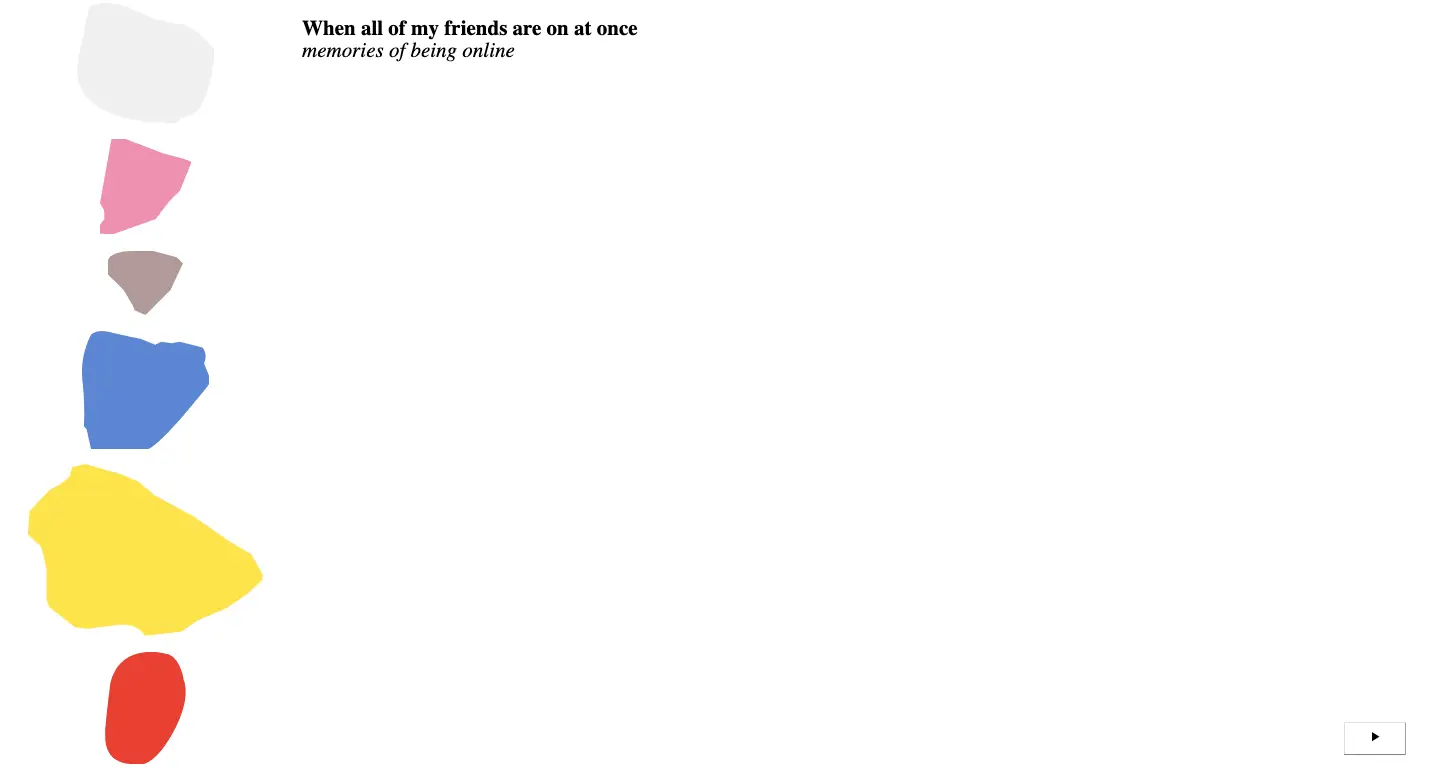
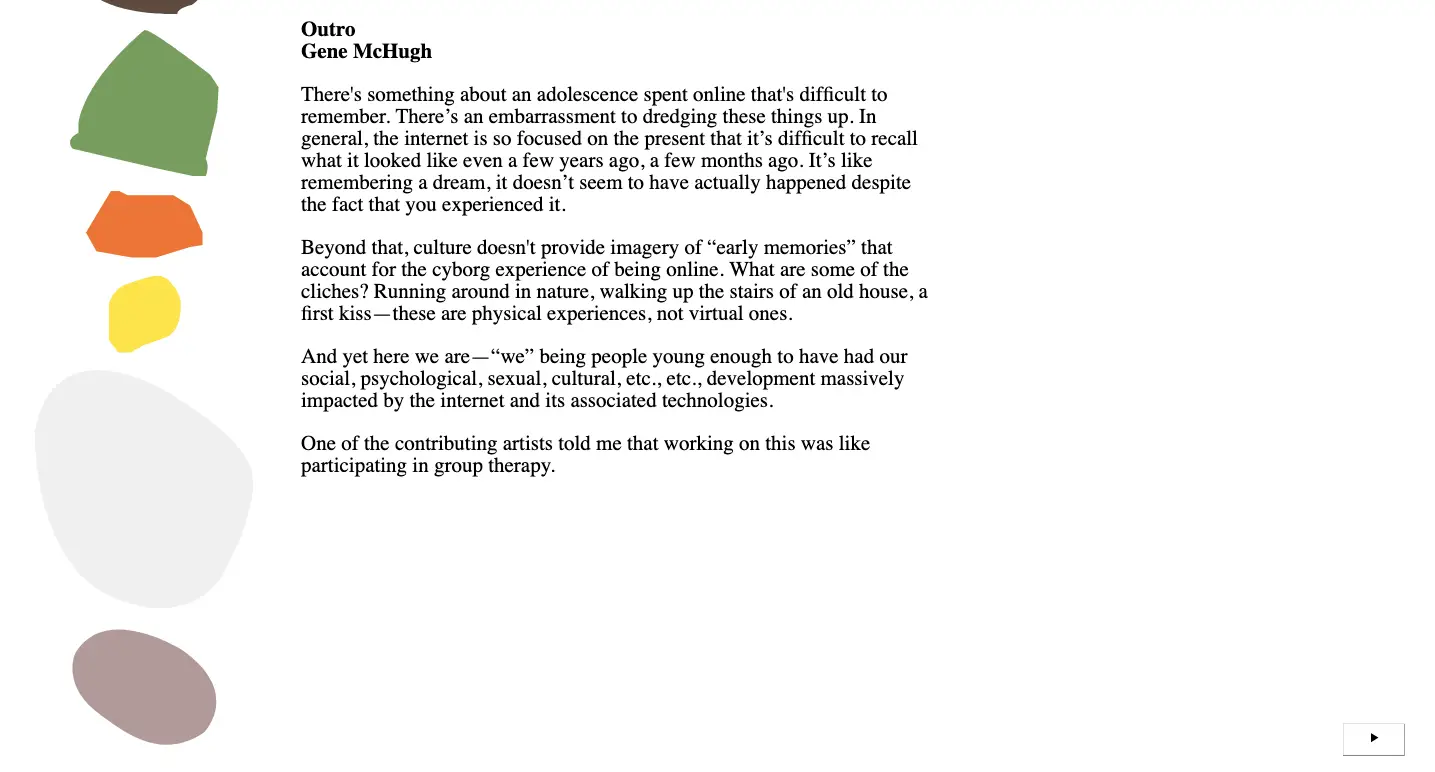
“When all of my friends are on at once” is another online anthology of personal writing about the internet. Instead of exploring the present like the onion, it looks to the past. 48 artists contributed their early internet memories, most remembering times online from the 1990s and early 2000s. Each memory is housed in a colorful blob (which I created by tracing my rock collection—I liked that each rock had a unique shape, just like each memory). The site was published in 2013.
This project came about largely because I invited writer and curator Gene McHugh to lecture the first semester I taught my interactive design class at Yale. On the way to and from school on the long, two-hour train ride, Gene and I talked about each of our early internet memories, and it was then that we decided to work together to form what became this publication. Gene asked for submissions and curated the group, I designed the website, and together we published it later that year.
My particular memory was about my participation in online horse fandom. This personal era, which spanned late elementary to the middle of high school, was incredibly formative. Through my love of horses, I created my first websites and was part of a small intentional learning community.
In his ending letter, Gene recalled, “One of the contributing artists told me that working on this was like participating in group therapy.” I didn’t feel that at the time, but looking back now, I agree—publishing my story publicly, which I had told countless times, felt like a relief that wouldn’t have been as easy to achieve if I had done it all myself. In that sense, one of the amazing things about these collective publications is being able to ride a miraculous wave without needing to invent the whole ocean and surfboard by yourself.
3. Onion and Rocks
Both sites—which I’ll call “onion” and “rocks” from here on out—have obvious similarities. They’re both anthologies of personal writing about the internet. They’re publications presented as stand-alone websites that are self-published and maintained by me. Both use metaphor in their visual design—rocks to represent early memories, and a layered onion to represent love. Rocks are typically old, as are memories, and onions are alive and layered, like love. And both are organized linearly by default and sport a kind of “next” button to advance to the next piece, with supporting keyboard arrow functionality. In that way, they take some of their form from a book.
Even if it doesn’t seem so on the outside, I think both publications are about love and the internet. At least they are for me…
In terms of love, “rocks” is really about belonging. Belonging is an integral human need, especially at a young age. Many of the entries are about the authors (who are kids or teenagers at the time) using the internet to escape (their family, their school, their suburb, etc.), to find their chosen community online. While this type of story also lives in the “onion,” overall the onion’s tales center around private communication channels, like texting and private groups. Because of how the internet has shifted—from only being used by a few in the early days to being used by everyone today—it seems like love has gone private. Love rarely exists publicly online. And when it does exist, it’s temporal.
But some entries in “rocks” aren’t about belonging—they’re sometimes simply documentation of some weird, specific subculture that probably hasn’t been documented in any other form. The internet can feel like a dream in this way. Gene said in his outro, “The internet is so focused on the present that it’s difficult to recall what it looked like even a few years ago, a few months ago. It’s like remembering a dream, it doesn’t seem to have actually happened despite the fact that you experienced it.“
I think that’s another non-obvious similarity of the two sites: I believe “onion” does this “oral history of the internet” job, too. This type of unique personal history and tacit knowledge about the internet can’t easily be understood from reading books about the internet or browsing archive.org’s Wayback Machine. Both sites’ formal relationship to books also helps them want to be understood as more than “just websites,” but instead as finished publications that live online.
For me, both sites are personally meaningful because they are bookends on a phase of my teaching career. Both “rocks” and “onion” came about by inviting guests into my class and/or considering my class a type of workshop in conversation with the world. While “rocks” wasn’t a class project per sé, it did spiral out through a conversation with my invited guest lecturer, and likely sparked because we were talking about themes related to interactive design. The “onion,” on the other hand, was intentionally a collective class project and was shaped, in both its content and form, by the entire class. I’d taught the class for a while at this point, and realized I could be more flexible with the roles of my invited guests, so I asked Meg Miller to be editor. Like any creative process, the “onion” had its ups and downs, periods of pause and activity, but the energy present inside the classroom when we were first imagining and creating it the onion together was quite special. Everyone had their role: illustrator, designer, developer, proof-reader, sound designer, love counselor, role-creator... it was a good vibe that spring. A lot has happened since then, but somehow these layers feel more relevant than ever before. As I said, this onion will be readable in its entirety for 5 weeks and then will decay. If you’d like to write a layer for a future onion, which will come back around this time next year, feel free to let me know.
